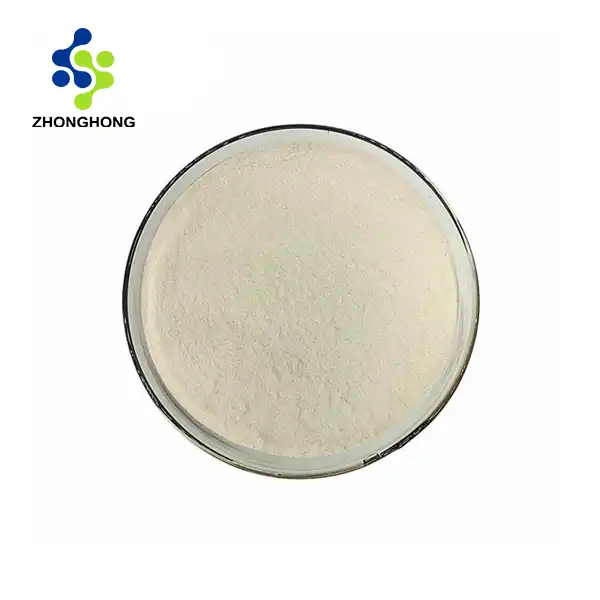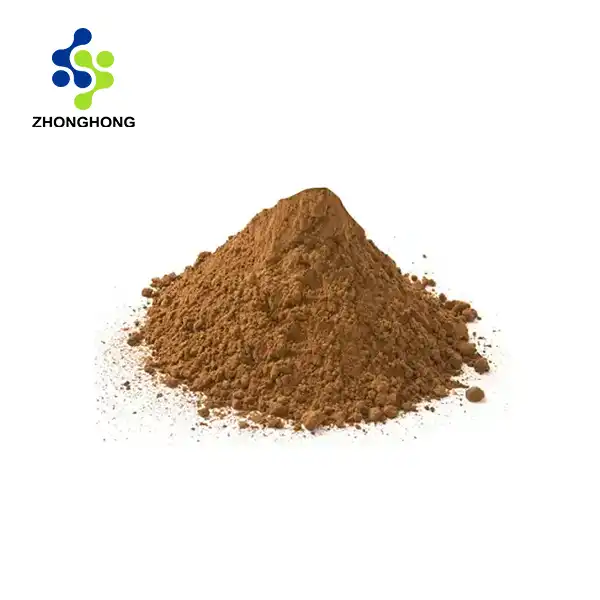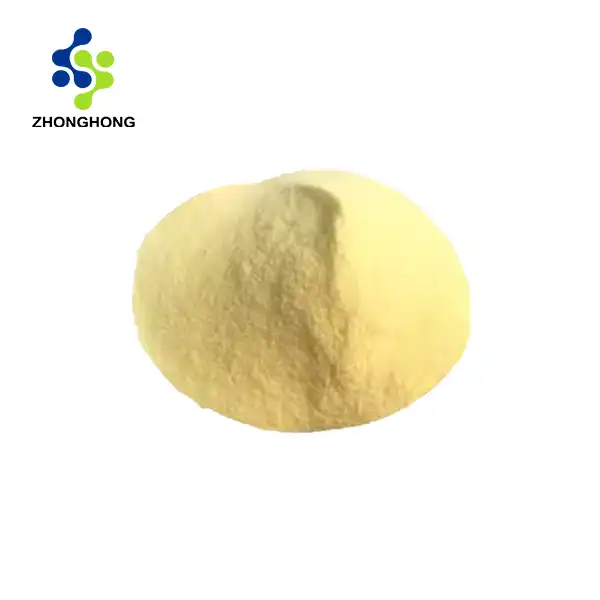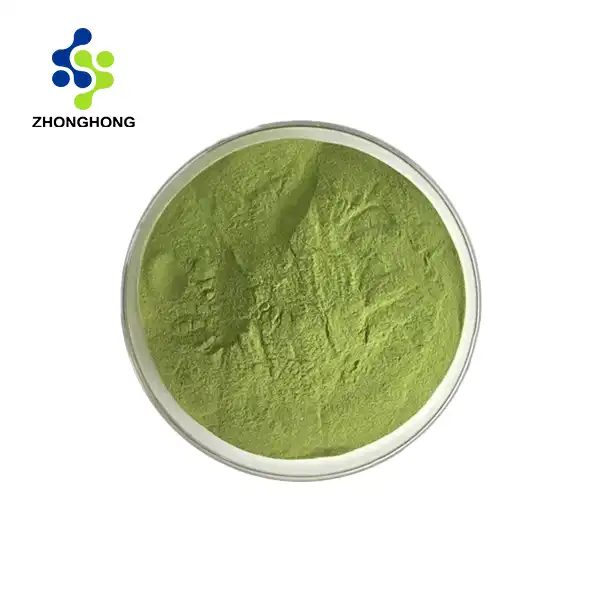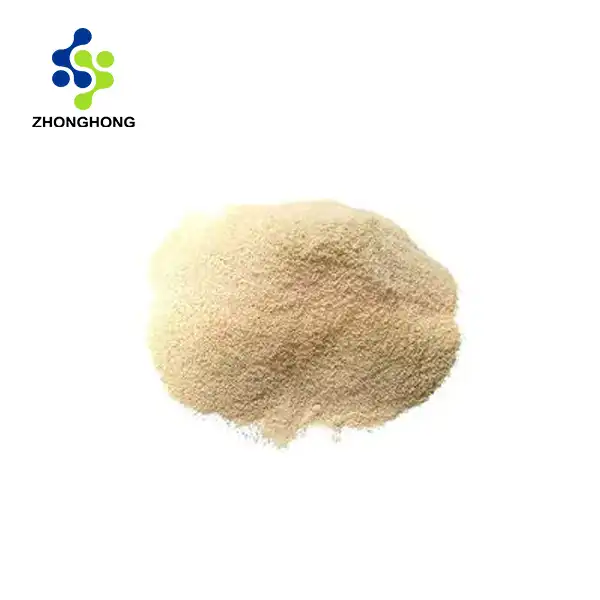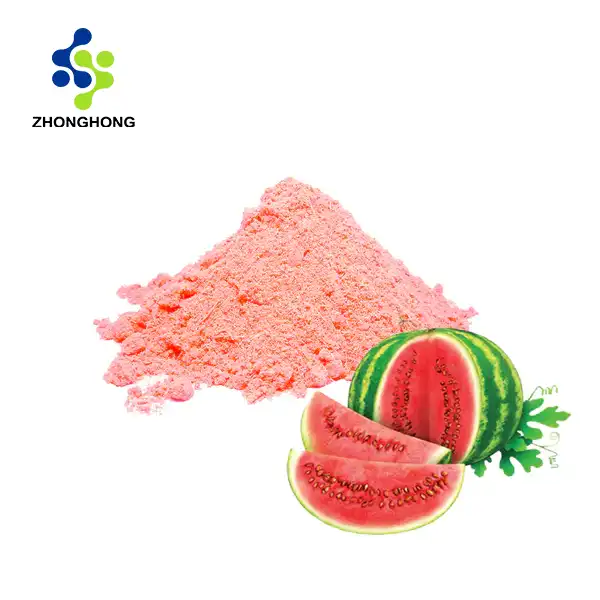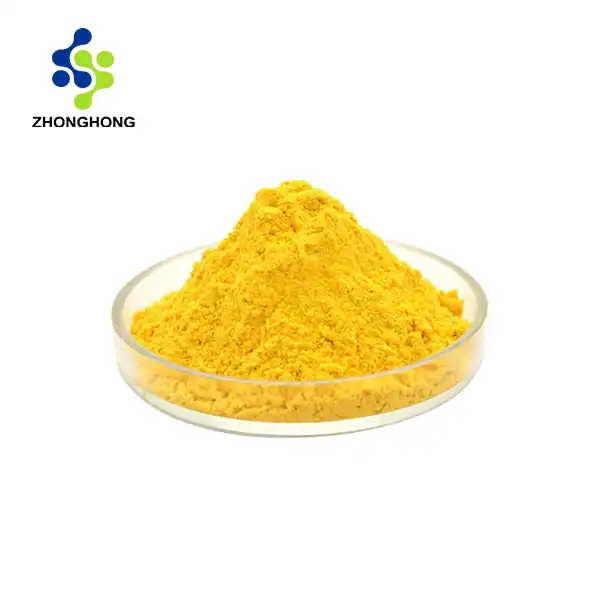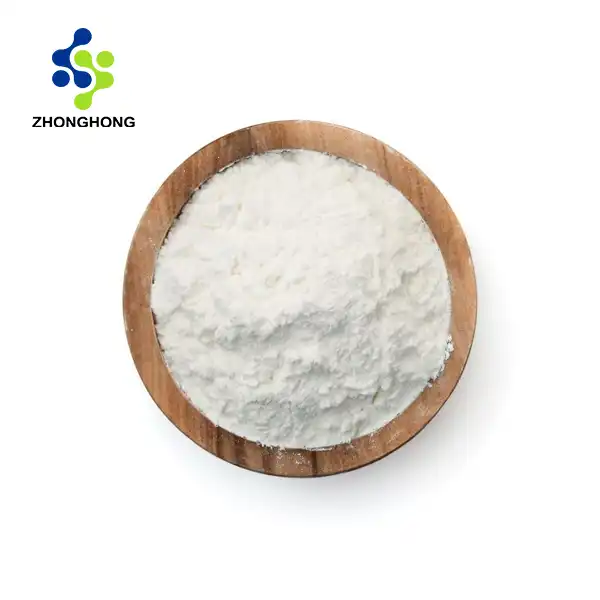How does glabridin work?
2024-11-28 19:10:34
Glabridin, a strong bioactive compound found in licorice root, has earned noteworthy consideration in the logical community for its assorted run of organic exercises. This normally happening isoflavonoid works through numerous components to apply its impacts on different real frameworks. Glabridin powder, the concentrated frame of this compound, has appeared promising comes about in antioxidant, anti-inflammatory, and skin-lightening applications. Its capacity to tweak chemical exercises, connected with cellular receptors, and impact quality expression contributes to its wide-ranging impacts. By rummaging free radicals, hindering tyrosinase movement, and tweaking incendiary pathways, glabridin illustrates its potential in corrective, pharmaceutical, and nutraceutical businesses. The compound's interaction with estrogen receptors moreover proposes conceivable benefits in hormone-related conditions. As investigate proceeds to disentangle the complex workings of glabridin, its potential applications in wellbeing and excellence items proceed to extend, making it a profitable fixing for companies looking for normal, successful arrangements.
Antioxidant and Anti-inflammatory Properties of Glabridin
Free Radical Scavenging Abilities
Glabridin powder shows exceptional antioxidant properties, basically through its capacity to neutralize hurtful free radicals in the body. These unsteady atoms can cause oxidative stretch, driving to cellular harm and contributing to different wellbeing issues. Glabridin's chemical structure, including different hydroxyl bunches, permits it to give electrons to free radicals, successfully stabilizing them and avoiding assist harm. This antioxidant action is especially useful in securing lipids, proteins, and DNA from oxidative hurt, possibly abating down maturing forms and decreasing the chance of inveterate maladies.
Inhibition of Pro-inflammatory Enzymes
One of the key mechanisms by which glabridin exerts its anti-inflammatory effects is through the inhibition of pro-inflammatory enzymes. Specifically, glabridin has been shown to suppress the activity of cyclooxygenase (COX) and lipoxygenase (LOX) enzymes, which play crucial roles in the production of inflammatory mediators. By modulating these enzyme pathways, glabridin helps reduce the overall inflammatory response in the body. This action is particularly relevant for conditions characterized by chronic inflammation, such as arthritis, cardiovascular diseases, and certain skin disorders.
Modulation of Inflammatory Signaling Pathways
Past chemical hindrance, glabridin moreover impacts fiery signaling cascades at the cellular level. Inquire about has illustrated its capacity to downregulate the atomic factor-kappa B (NF-κB) pathway, a central controller of aggravation. By interferometer with this signaling course, glabridin can smother the generation of pro-inflammatory cytokines and chemokines, successfully hosing the provocative reaction. This multifaceted approach to aggravation administration underscores glabridin's potential as a common anti-inflammatory operator with applications in both pharmaceutical and nutraceutical items.
Skin-lightening and Dermatological Applications
Tyrosinase Inhibition Mechanism
One of the most well-documented effects of glabridin is its ability to inhibit tyrosinase, a key enzyme in melanin production. Melanin is the pigment responsible for skin, hair, and eye color, and its overproduction can lead to hyperpigmentation issues. Glabridin powder acts as a competitive inhibitor of tyrosinase, binding to the enzyme's active site and preventing it from catalyzing melanin synthesis. This mechanism makes glabridin a valuable ingredient in skin-lightening formulations, offering a natural alternative to synthetic whitening agents. Its efficacy in reducing melanin production has been demonstrated in both in vitro studies and clinical trials, showcasing its potential in addressing various pigmentation concerns.
UV Protection and DNA Repair
Past its skin-lightening properties, glabridin too offers assurance against bright (UV) radiation-induced harm. UV presentation is a major supporter to untimely skin maturing and can increment the hazard of skin cancers. Glabridin's antioxidant properties play a pivotal part in neutralizing responsive oxygen species created by UV radiation, in this manner securing skin cells from oxidative push. In addition, a few considers recommend that glabridin may upgrade DNA repair components in skin cells uncovered to UV radiation, possibly decreasing the long-term impacts of sun harm. This double activity of UV assurance and DNA repair bolster makes glabridin an alluring fixing for sunscreen definitions and anti-aging skincare items.
Collagen Synthesis and Skin Elasticity
Glabridin's benefits for skin health extend to its ability to influence collagen synthesis and maintain skin elasticity. Collagen is a crucial structural protein that provides strength and resilience to the skin. Research indicates that glabridin can stimulate collagen production in dermal fibroblasts, the cells responsible for synthesizing the extracellular matrix of the skin. Additionally, glabridin has been shown to inhibit matrix metalloproteinases (MMPs), enzymes that break down collagen and elastin fibers. By promoting collagen synthesis and protecting existing collagen from degradation, glabridin contributes to maintaining skin firmness and elasticity, making it a valuable ingredient in anti-aging skincare formulations.
Metabolic and Cardiovascular Effects of Glabridin
Glucose Metabolism and Insulin Sensitivity
Glabridin has shown promising effects on glucose metabolism and insulin sensitivity, suggesting potential applications in managing metabolic disorders such as diabetes. Studies have demonstrated that glabridin can enhance glucose uptake in cells by increasing the translocation of glucose transporter 4 (GLUT4) to the cell membrane. This action improves insulin sensitivity and helps regulate blood glucose levels. Additionally, glabridin has been found to inhibit protein tyrosine phosphatase 1B (PTP1B), an enzyme that negatively regulates insulin signaling. By suppressing PTP1B activity, glabridin may further enhance insulin sensitivity and glucose utilization, offering potential benefits for individuals with insulin resistance or type 2 diabetes.
Lipid Profile Improvement
Another significant aspect of glabridin's metabolic effects is its ability to positively influence lipid profiles. Research has shown that glabridin powder can reduce total cholesterol and low-density lipoprotein (LDL) cholesterol levels while increasing high-density lipoprotein (HDL) cholesterol. This lipid-modulating effect is attributed to glabridin's ability to inhibit cholesterol synthesis and enhance cholesterol efflux from cells. By improving lipid profiles, glabridin may contribute to reducing the risk of cardiovascular diseases, making it a potentially valuable ingredient in nutraceutical formulations aimed at supporting heart health.
Vascular Health and Atherosclerosis Prevention
Glabridin's cardiovascular benefits expand past lipid profile change to include vascular wellbeing and atherosclerosis anticipation. Ponders have appeared that glabridin can restrain the oxidation of LDL cholesterol, a basic step in the improvement of atherosclerosis. By avoiding LDL oxidation, glabridin may offer assistance decrease the arrangement of froth cells and the movement of atherosclerotic plaques. Moreover, glabridin has illustrated vasoprotective properties by upgrading endothelial work and diminishing aggravation in blood vessels. These impacts, combined with its antioxidant and anti-inflammatory properties, position glabridin as a promising common compound for supporting cardiovascular wellbeing and anticipating age-related vascular maladies.
Conclusion
Glabridin's multifaceted mechanisms of action underscore its potential as a versatile bioactive compound with wide-ranging applications. From its antioxidant and anti-inflammatory properties to its skin-lightening and metabolic effects, glabridin offers numerous benefits across various health and beauty domains. As research continues to unravel its complex interactions within the body, glabridin powder stands out as a valuable ingredient for companies seeking natural, effective solutions in their product formulations. If you want to get more information about this product, you can contact us at liaodaohai@gmail.com.
References
1. Simmler, C., Pauli, G. F., & Chen, S. N. (2013). Phytochemistry and biological properties of glabridin. Fitoterapia, 90, 160-184.
2. Aoki, F., Nakagawa, K., Kitano, M., Ikematsu, H., Nakamura, K., Yokota, S., ... & Miyazawa, T. (2007). Clinical safety of licorice flavonoid oil (LFO) and pharmacokinetics of glabridin in healthy humans. Journal of the American College of Nutrition, 26(3), 209-218.
3. Yokota, T., Nishio, H., Kubota, Y., & Mizoguchi, M. (1998). The inhibitory effect of glabridin from licorice extracts on melanogenesis and inflammation. Pigment Cell Research, 11(6), 355-361.
4. Fuhrman, B., Volkova, N., Kaplan, M., Presser, D., Attias, J., Hayek, T., & Aviram, M. (2002). Antiatherosclerotic effects of licorice extract supplementation on hypercholesterolemic patients: increased resistance of LDL to atherogenic modifications, reduced plasma lipid levels, and decreased systolic blood pressure. Nutrition, 18(3), 268-273.
5. Choi, E. M. (2012). Glabridin protects osteoblastic MC3T3‐E1 cells against antimycin A induced cytotoxicity. Chemico-biological interactions, 195(3), 222-229.
6. Yu, X. Q., Xue, C. C., Zhou, Z. W., Li, C. G., Du, Y. M., Liang, J., & Zhou, S. F. (2008). In vitro and in vivo neuroprotective effect and mechanisms of glabridin, a major active isoflavan from Glycyrrhiza glabra (licorice). Life Sciences, 82(1-2), 68-78.
_1728976869676.webp)
